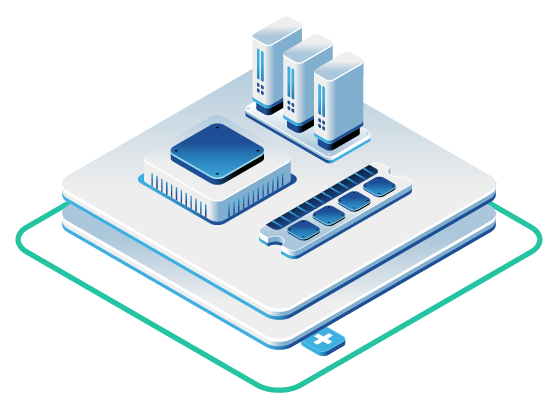In this article
- Active-Active Deployment
- Active-Passive Configuration
- Cold Standby and Backup Recovery
- Storage Replication and Data Protection
- Automated Disaster Recovery Systems
- Strategy Comparison Table
- Wrapping Up: Failover Strategies for OpenStack
- Interested in OpenMetal’s Hosted Private Cloud Powered by OpenStack and Ceph?
Downtime isn’t an option for the modern business. For companies running on OpenStack, failover strategies are essential for maintaining uptime and minimizing disruptions. This article outlines five key methods to keep your OpenStack cloud resilient. Each strategy has trade-offs in cost, complexity, and recovery speed. Choosing the right approach depends on your operational needs and budget. Let’s explore these options in detail to help you safeguard your OpenStack cloud.
1. Active-Active Deployment
Active-active deployment is a standout approach for ensuring high availability in OpenStack environments. By running multiple instances across different geographic locations simultaneously, this method goes beyond traditional backup systems that sit idle until activated. Instead, all components actively handle traffic, creating a solid foundation for advanced failover strategies. When implemented correctly, active-active deployment can achieve near-zero recovery times and prevent data loss entirely.
To make this work, L2 network communication via DCI is used to maintain consistent IP addressing during virtual machine migrations. Synchronous storage replication and all-flash clusters keep performance steady in real time. OpenStack services are often deployed in containers, with redundant instances for stateless services managed by tools like KeepAlive and HAProxy. Stateful services rely on Galera Cluster for database availability and RabbitMQ clustering for message queue redundancy.
However, active-active deployment comes with challenges. It requires double the infrastructure and a high-speed, low-latency network. Managing distributed lock managers and heartbeat monitoring adds complexity. For businesses running mission-critical applications that demand instantaneous failover, active-active deployment offers a level of availability that’s hard to match. At OpenMetal, our geographically distributed Tier III data centers across North America, Europe, and Asia provide the ideal foundation for such a setup.
2. Active-Passive Configuration
An active-passive configuration operates with one active OpenStack instance while a standby remains ready to take over instantly in case of failure. Unlike the active-active model, where both systems share traffic simultaneously, this setup prioritizes simplicity and affordability.
In this arrangement, the primary system manages all incoming requests, while the secondary remains idle, monitoring the primary through heartbeat signals. If the active instance encounters an issue, the passive node takes over. Key components make this system work. A virtual IP address (VIP) ensures requests are directed to the active service, reducing the need for reconfiguration during failover. Additionally, a leader election mechanism prevents multiple controllers from acting simultaneously.
The active-passive approach offers clear cost advantages compared to active-active deployments. Since only one system operates at full capacity at a time, hardware requirements are lower. However, the passive node remains unused until needed, which can lead to resource inefficiency. Active-passive configurations are ideal for applications where reliability and fast failover are important, but scalability isn’t the primary focus. They offer a practical, cost-efficient way to achieve high availability.
3. Cold Standby and Backup Recovery
Cold standby systems are a practical and budget-friendly failover strategy for OpenStack clouds. In this approach, the backup infrastructure stays powered down until it’s needed. If the primary OpenStack environment fails, administrators must manually activate the cold standby, restore data, and redirect traffic to the recovery site. While this process can take several hours, it offers a considerable reduction in costs. The trade-off here is clear: slower recovery in exchange for lower operational expenses.
Implementing a cold standby system requires thorough planning to ensure redundancy and compatibility. The process begins with establishing a backup site equipped with all the necessary components. While cold standby systems are typically manual, integrating automated failover mechanisms can significantly cut down recovery time.
Cold standby is a great choice for organizations that prioritize cost savings over fast recovery. It’s particularly well-suited for development environments, backup data centers, and non-critical applications. The most basic and cost-effective failover strategy is the backup and restore method. This strategy provides a dependable and cost-effective disaster recovery solution for organizations with flexible needs.
4. Storage Replication and Data Protection
Storage replication is all about safeguarding data rather than duplicating entire systems. This method ensures critical information remains accessible by copying it to secondary locations. In OpenStack environments, you can choose between synchronous or asynchronous replication, depending on your needs for performance and consistency.
What makes storage replication stand out is its targeted protection. Unlike cold standby systems that require activating an entire infrastructure, this approach lets you focus on specific data sets. Ceph, which we use at OpenMetal, integrates seamlessly with OpenStack to deliver scalable and cost-effective storage options.
Storage replication strikes a balance between cost and protection. It’s more affordable than active-active setups but offers more robust protection than cold standby systems. It is ideal for organizations that prioritize data protection over full system redundancy. It’s particularly effective for database-driven applications and content management systems.
5. Automated Disaster Recovery Systems
Automated disaster recovery systems in OpenStack are designed to detect failures and immediately kick off predefined workflows, significantly cutting downtime compared to manual recovery methods.
OpenStack comes equipped with native tools to simplify disaster recovery. The Telemetry service, known as Ceilometer, continuously tracks resource usage. For extended monitoring, external tools like Prometheus can be integrated. OpenStack’s Heat orchestration service allows automated resource deployment through templates. Mistral takes automation further by handling instance failover and data restoration.
Using Infrastructure as Code (IaC) tools like Terraform and Ansible, teams can quickly rebuild OpenStack resources at secondary sites. While the initial setup can be complex, the long-term advantages—such as reduced downtime and lower recovery costs—make it a valuable investment. OpenMetal’s hosted private clouds for disaster recovery provide a seamless way to enhance your DR strategy.
Strategy Comparison Table
The table below outlines five OpenStack failover strategies, comparing them across key dimensions like cost, recovery speed, and complexity.
Strategy | Cost Efficiency | Recovery Time Objective (RTO) | Implementation Complexity |
Active-Active Deployment | Low | Near-zero | High |
Active-Passive Configuration | Moderate | Low to moderate | Moderate |
| Cold Standby | High | High | Low |
| Storage Replication | Moderate | Low | Moderate |
| Automated DR Systems | Variable | Very low | High |
Wrapping Up: Failover Strategies for OpenStack
Choosing the right failover strategy for your OpenStack cloud is about ensuring your operations remain uninterrupted. The strategies outlined address varying business needs and budgets. While high-availability systems aim for 99.999% uptime, achieving this reliability demands the right infrastructure and planning.
With over 80% of organizations using public clouds regularly exceeding their budgets, the predictable fixed-cost pricing of OpenMetal’s private cloud solutions is increasingly appealing. Our Tier III data centers provide the geographic distribution necessary for effective disaster recovery. Our OpenStack and Ceph-powered infrastructure supports all the failover approaches discussed, providing a solid foundation for your resiliency needs.
Schedule a Consultation
Get a deeper assessment and discuss your unique requirements.
Read More on the OpenMetal Blog


































